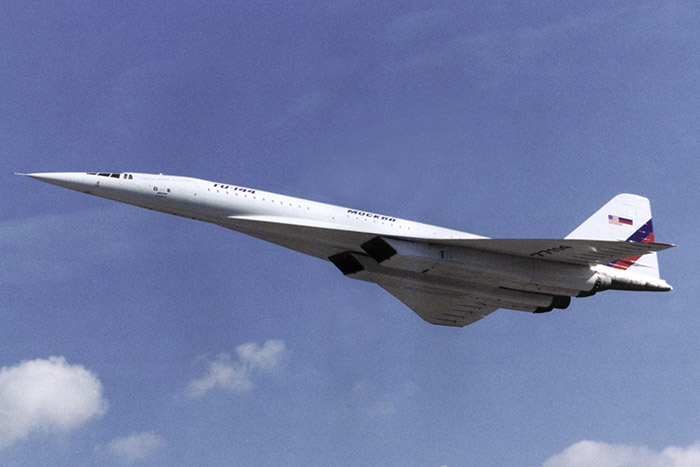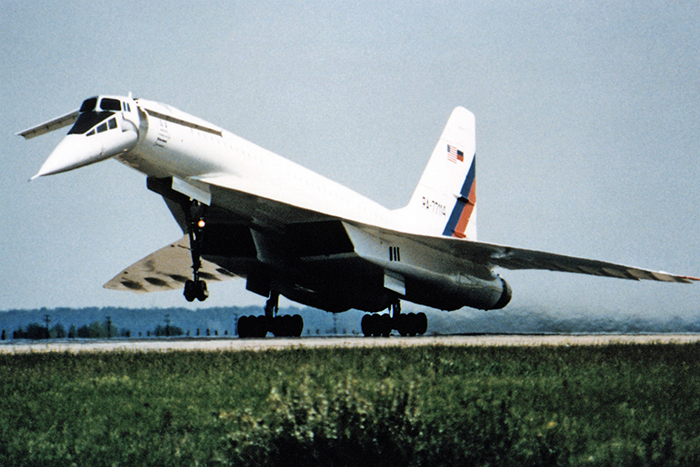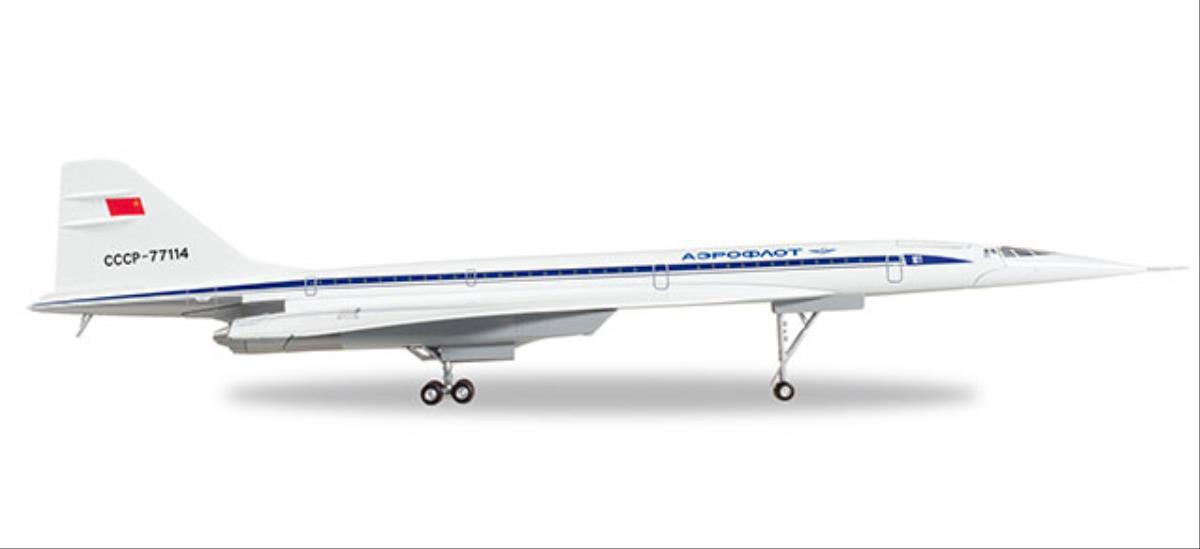

 TERRY SMITH looks at this Russian supersonic airliner.
TERRY SMITH looks at this Russian supersonic airliner.
Often regarded as a complete failure this aircraft had a longer and more interesting career than most know about, even aiding both the Russian Space Program and NASA.
In 1963, news broke to the world that the Russians were to develop their own SST (supersonic transport) to rival the Anglo-French Concorde. So close in its design was the Tupolev design, that the press in the West soon nicknamed it 'Concordski'.

The Tu-144 looked uncannily like the Concorde, however the plane went on to have uses outside the role of passenger transport. Here we see it in the late 1990s being used by NASA as a supersonic laboratory – Note the US and Russian flags side by side on its tail.
It seems to have some advantages too, such as a very slightly higher top speed and the ability to carry 20 more passengers. In December 1968 it beat the Concorde into the air by two months and was also first to reach Mach 1 and then Mach 2, but problems lay ahead. No more so than on the second day of the 1973 Paris Air Show, when a Tu-144 broke up in mid-air while apparently trying to out-display the Concorde on a demonstration flight. Failure due to stress on the wing surfaces being the main cause.
Despite this set-back, plans pressed on and Aeroflot introduced them on an internal passenger service between Moscow and Almaty in 1975.
However, these flights were very often dogged with technical failures and subsequent flight cancellations. After a second aircraft was lost due to an engine fire, the airline withdrew their passenger service in 1978.
Because of these failures, you may have thought that this would be the end of the Concordski's career, but it soldiered on in commercial service as a cargo aircraft - possibly the fastest the world has ever seen. This freight service continued up until 1983, when Aeroflot retired their fleet of Tu-144s. This was the same year the program was cancelled after only 16 aircraft had been built, with some aircraft seeing very few hours of flying time. They were offered up for use by the Russian military, but even they rejected them due to its poor reliability.
The plane was handed a lifeline in the 1990s, when the Soviet Space program used a converted version to train its cosmonauts in flying the planned Russian Bukan Space Shuttle.

The Tu-144LL taking off from Zhukovsky Air Development Centre in Russia, what a sight!
Later, another was converted to be used in the research of high-altitude atmosphere radiological conditions by the Soviet government. The strangest of all uses must be by the American company IBP Aerospace. In 1995 they drew up an agreement between Tupolev, Rockwell, and NASA to use a Tu-144 as a flying test bed for a future second-generation high-speed transport.
An aircraft with just around 80 hours of flying time was pulled out of storage and over US$350 million was used to convert it for this purpose. However, the plane was never allowed to leave Russian airspace! Known as the Tu-144LL it flew between 1996 and 1997 and after many flights it was considered a technical success, but the project was cancelled due to lack of funds. The last Tu-144 flight took place on 26th June 1999 and the world lost its only other Supersonic airliner.

The Tu-144 is part of the new range of airliner models from Herpa (Click Here to view), so now you can own your own part of supersonic aviation history.